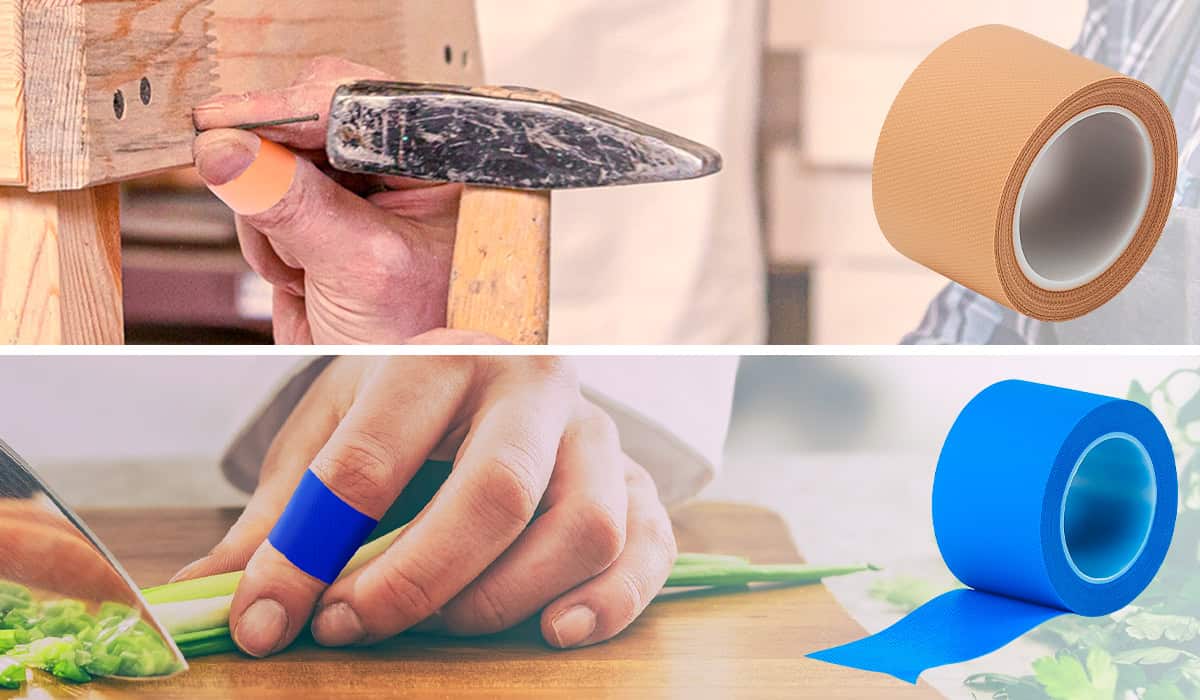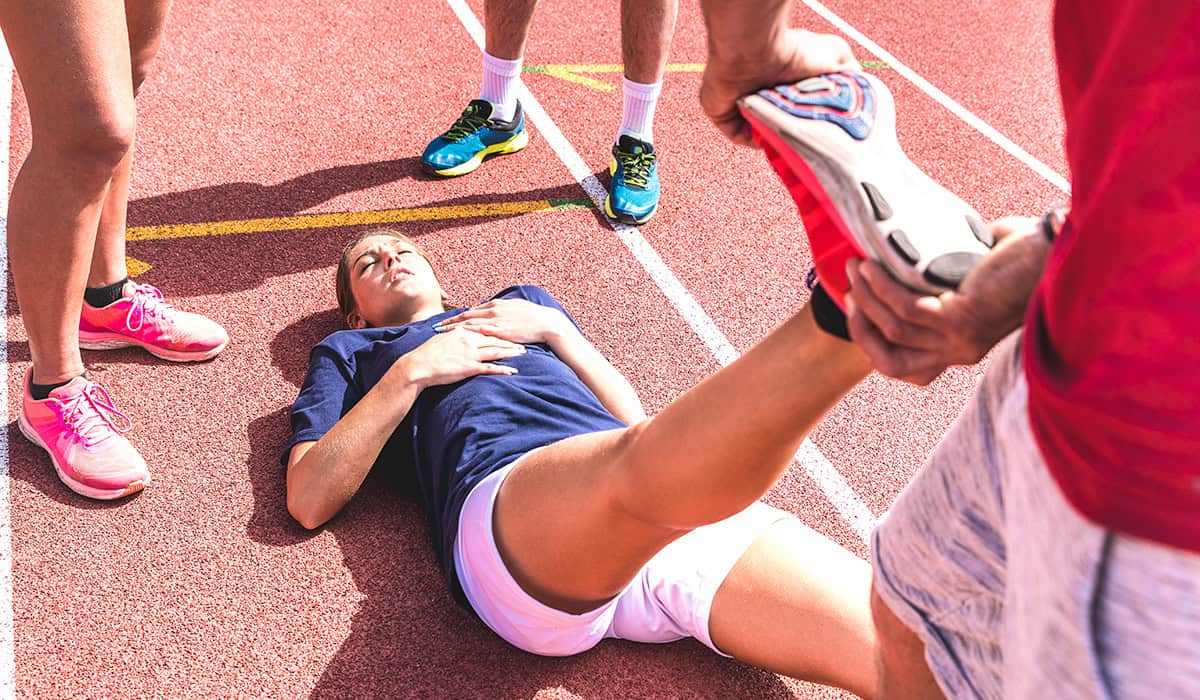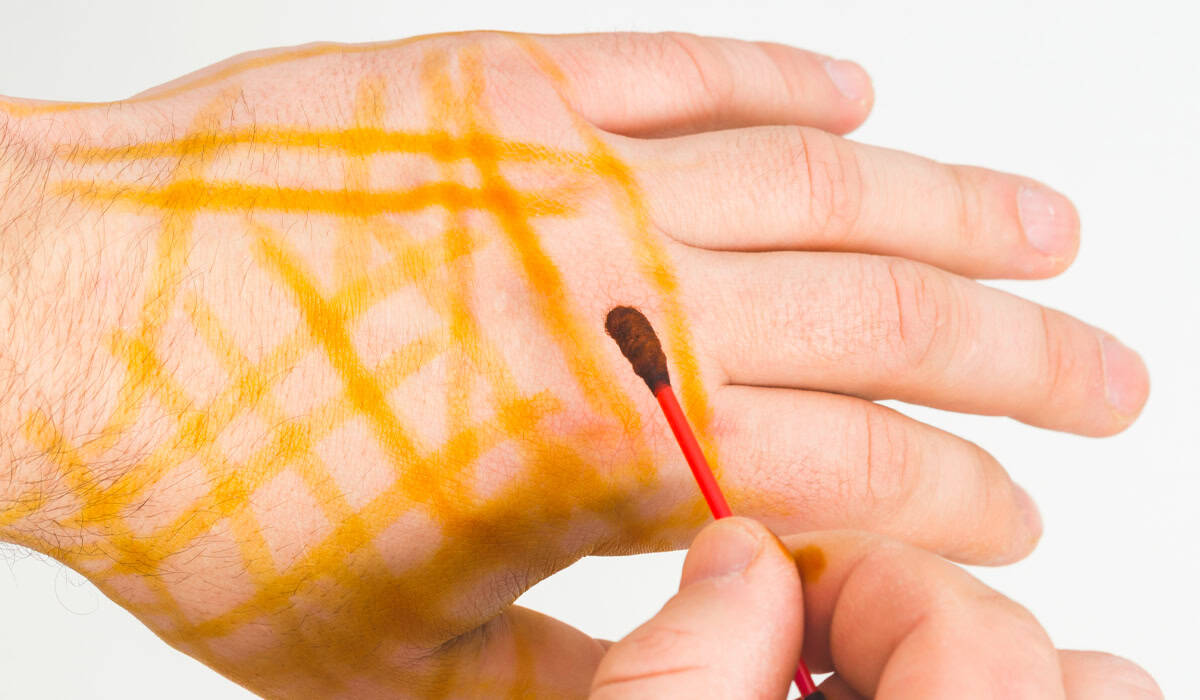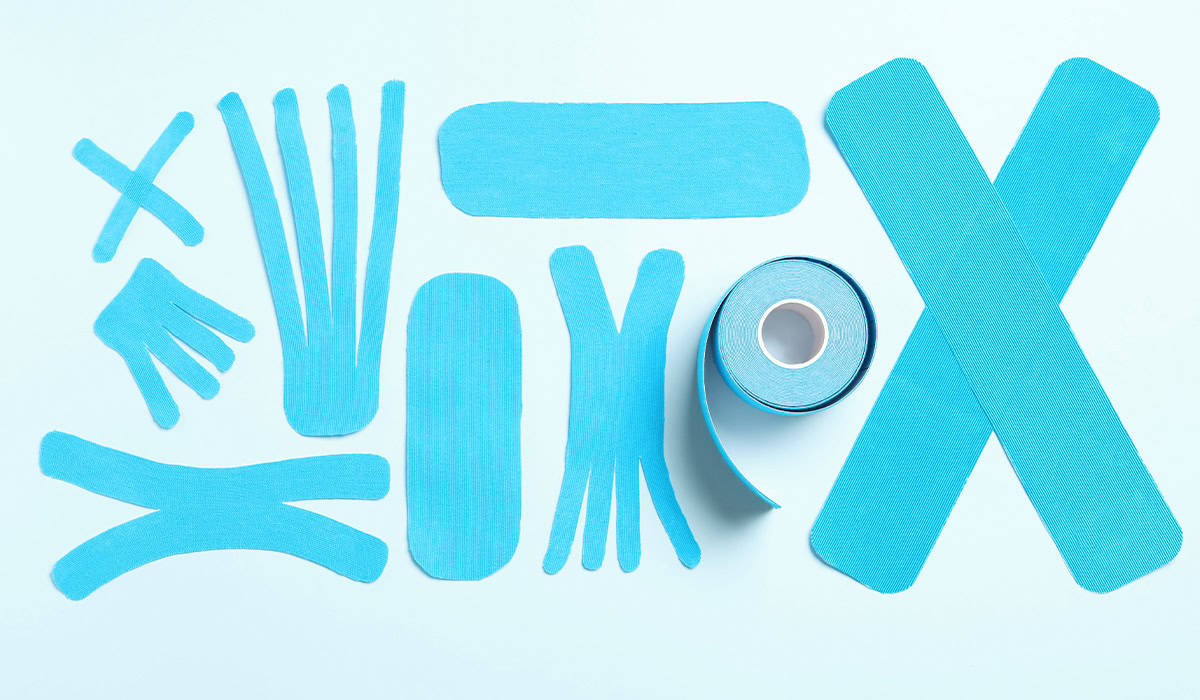
Waterproof strapping works in a similar way to compression bandages, providing support to injuries, particularly those occurring around a joint. They are common in sports first aid, replacing kinesiology tape where the sport is likely to take place in wet or damp environments. It is very easy to use, with step-by-step instructions included below.
What are waterproof strappings?
Waterproof strappings are a waterproof version of medical tapes such as kinesiology tape, EAB tape and Zinc Oxide tape. It is durable and highly stretchy, making it perfect for limiting the range of movement to an injured joint.While most medical tapes and strappings are water resistant or washproof, waterproof strapping enables wearers to immerse the area in water with no worry of ruining the strapping’s adhesive abilities. This is thanks to the water-repellent coating and is similar to how waterproof and washproof plasters work.
Types of waterproof strapping
Strapping in general works by compressing and stabilising the injury area to provide additional support. There are several types of first aid strapping that can come in a waterproof material including:- Medical tape – secures bandages and dressings in place
- Cohesive bandages - self-adhesive so will stick to itself even in wet conditions
- Splinting straps – used in conjunction with splints for immobilising limbs
- Finger or toe straps – small straps designed specifically for injuries involving fingers or toes
We currently offer our waterproof strapping in two colour options: pink and blue. Both colour options serve the same purpose, but the blue waterproof strapping is specifically designed for use in catering environments. It’s ideal for taping fingers and securing dressings in food preparation areas, as its bright colour makes it easily visible in case it comes loose, helping to meet food safety regulations.

What are waterproof strappings used for?
Waterproof strapping is used to hold dressings in place when needed, as it conforms to the body and ensures that the dressing won’t slip even when the area is being moved or becomes wet. It will act similarly to a PU Dressing, with the non-adhesive pad being placed directly over the wound and the waterproof strapping securing the pad to the skin so that it can be worn when the person is bathing or swimming.Strapping in general works by compressing and stabilising the injury area to provide additional support. As a result, waterproof strapping is also used for supporting injuries or weakened joints, by immobilising or limiting their range of movement. They are common in sports first aid, particularly for contact sports, like rugby. It is also normal for strapping to be used in physiotherapy to help stabilise a recovering joint, allowing it to be supported while still providing enough flexibility to perform the required movements.
Another use of waterproof strapping is to hold a hot or cold pack in place. The strapping can be used to wrap around a cold compress and hold it in place after an injury to reduce the swelling. Not only will it help provide some compression as is needed after a soft tissue injury, but won’t be affected by condensation or perspiration.
If you are exploring the great outdoors and happen to potentially fracture a bone, requiring a splint, waterproof strapping can be used to hold the splint firmly in place, reducing the risk of worsening the injury while waiting for help.
Waterproof strappings are the perfect solution if there is a high likelihood of rain during a match or the person wearing the supports is expecting to get wet. Alternatives like EAB and Zinc Oxide tapes would start to peel and come loose when they get wet, lessening the support that they are supposed to offer.
How to use waterproof strappings correctly
Using waterproof strapping is very simple once you get the hang of it, however, it may take a little practice to get the strapping in the correct position the first time. The positioning of the strapping will also vary depending on the person, even if it is for the same joint as everyone will have different needs and preferences.- Assess the casualty

- Clean the area

- Remove excess hair

- Cut the strapping to length

- Apply the tape

How long should strapping stay on?
Depending on the reason for its use, it can stay on for three days to a maximum of one week. Some sports players will only wear it when playing a game and remove it afterwards, while those using it to treat short-term injuries, or therapy may choose to leave it on for the full week before replacing it.If there are any signs of a reaction to the tape, for example irritation, the strapping must be removed immediately.
Taping techniques
There are several common techniques that can be used when applying waterproof strapping to a casualty. These include:Figure-of-Eight Strapping
Often used for sprained or injured joints, particularly the ankle or knee, helping to reduce movement, stabilise the area and limit swelling. You apply the bandage by wrapping it in a figure-eight pattern around the joint.Spiral Strapping
To secure the a dressing or bandage to an arm or leg, or to provide compression to an area that is bleeding or swelling, a common technique to use is the spiral strapping technique. This is where the bandage is secured at the base of the limb then wrapped in a spiral motion overlapping each layer by half.Anchor Strapping
Anchor strapping is ideal for initial wound dressing applications or for starting splinting, ensuring that the bandage doesn’t shift or become loose.The bandage is “anchored” at the base, above the injury or around a stable body part such as the wrist or thigh, then wrapped above or below the injury to hold it securely in place. This method is used as the initial layer of support before proceeding with more specific strapping techniques.
Heel Lift Strapping
Heel lift strapping is commonly used for ankle sprains, heel fractures or Achilles tendon injuries, as it provides support and prevents further injury during movement.It is applied by wrapping the bandage around the foot and the injured area of the hell before wrapping it in a figure-eight motion, ensuring that the heel is immobilised but not overly restricted. Ensure that the bandage will still allow for circulation and isn’t too tight.
Learn more about waterproof strapping
Waterproof strapping is ideal for inclusion in sports first aid kits is essential, especially for high-contact sports such as football and rugby. It provides excellent joint support during intense activity, helps to prevent injury and aids in recovery.Unlike kinesiology tape, waterproof strapping doesn’t require under wrap or pre-tape spray. For the best results apply it directly to the skin, as its waterproof properties help it to stay secure even during sweaty or wet conditions, ensuring long-lasting support throughout the game or practice.
Read our other blogs for more information on first aid or contact us for further advice and information on our products.
By Sarah Mason
Explore more:

